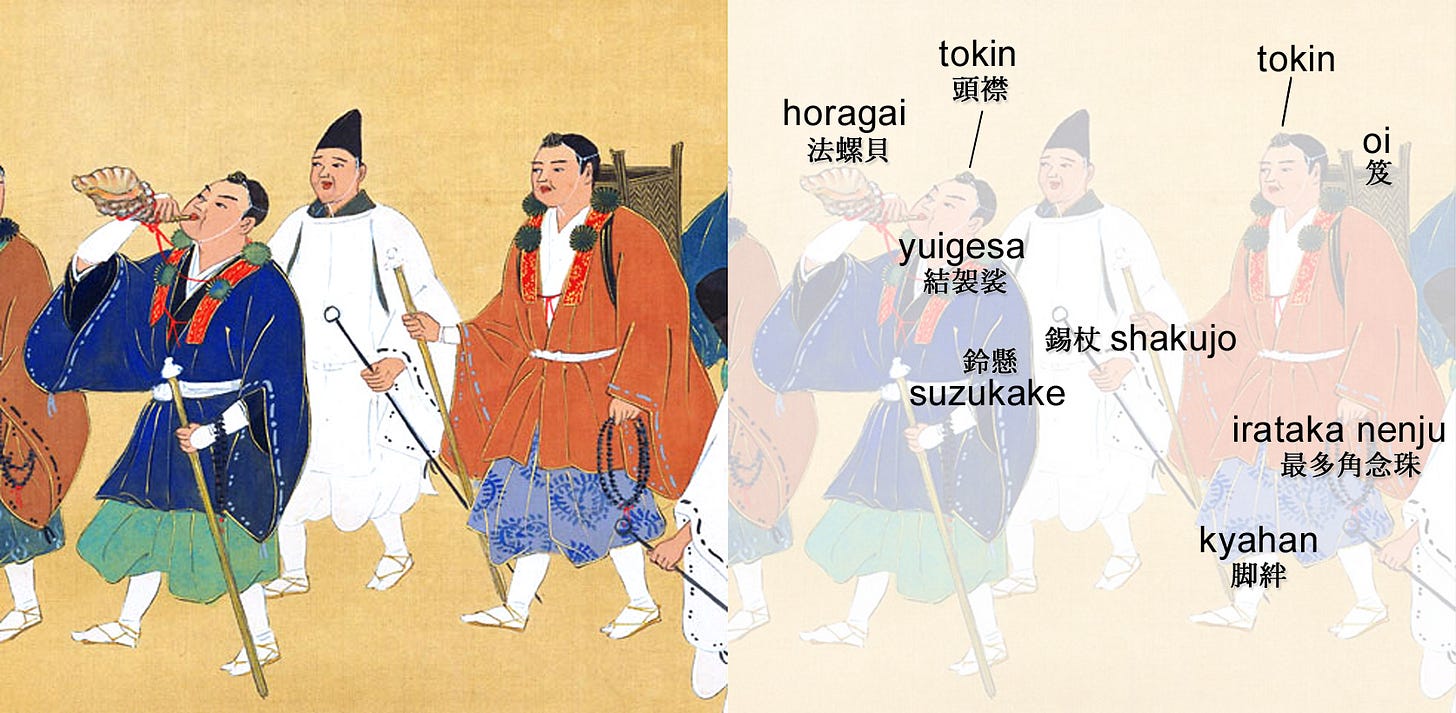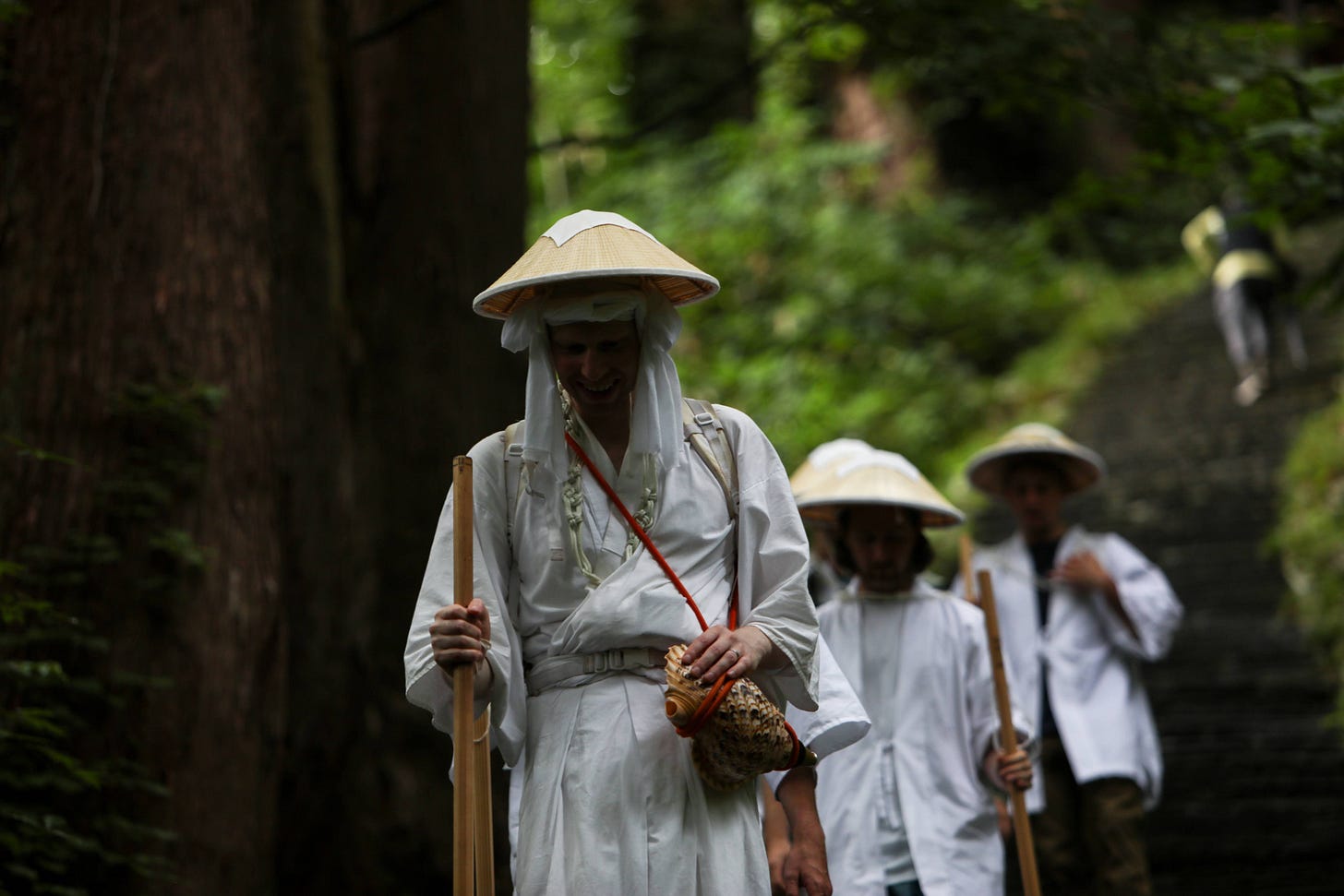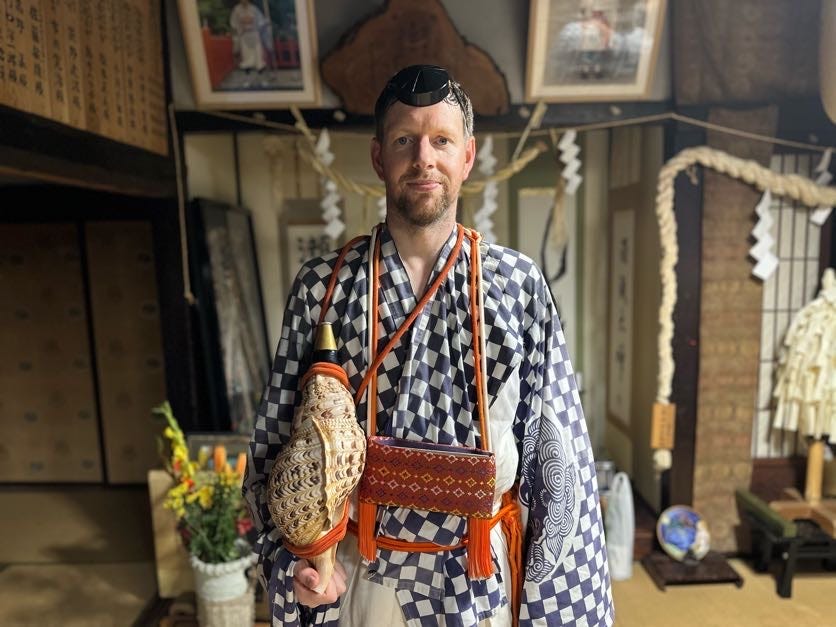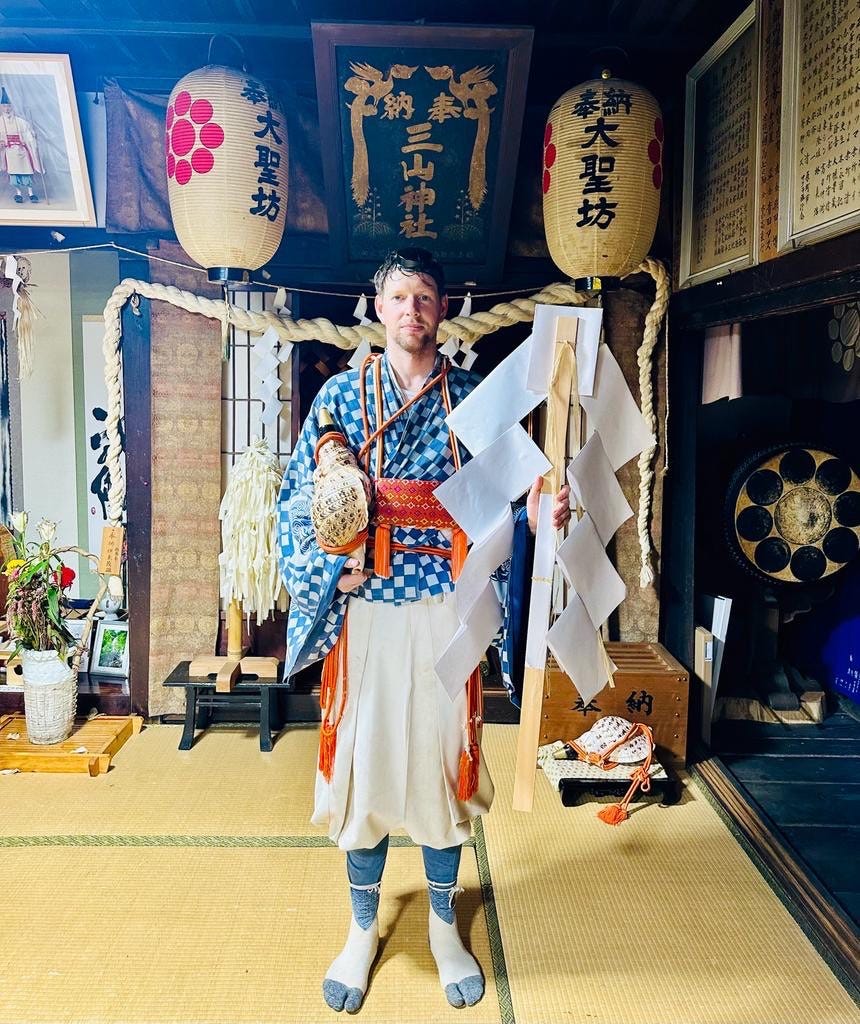Yamabushi Gear Explainer: The Futodasuki Sash
The vermillion and white sash represents yin and yang, the vast cosmos and the natural world.
Futodasuki (太襷,太多須嬉)
Every time I put on my yamabushi garb, it gives me great pride to also put on my Futodasuki, a vermillion and white braided sash with a small pocket in the front, and a round mirror on the reverse.
Why?
Not just anyone can wear a Futodasuki. Not even Yamabushi, in some cases at least.
Futodasuki can only be worn by those who have completed the Akinomine Autumn’s Peak Ritual, or the female version, the Miko Shugyo, not once, not twice, but three times (I’ve done it four times, so there!). Or, those who have earned similar merits, such as leaders of Kochu pilgrimages (see this video for more on that).
In other words, my Futodasuki is a physical symbol of my training to date. It’s a physical symbol of how far I’ve come, and what the mountains have helped me to achieve since I first put on the yamabushi garb way back in 2017.
So, where do Futodasuki come from?
I still maintain the Dewa Sanzan mountains are the best place to learn about spirituality and religion in Japan. Futodasuki are but one part of that argument (this video has more).
You see, Futodasuki are a Dewa Sanzan thing. They were created for Shinto yamabushi following the separation of Shinto and Buddhism in the early Meiji Era (1868-1912). As far as I’m aware, Fudodasuki only exist on the Dewa Sanzan, training ground for the only predominantly Shinto yamabushi in Japan, let alone the world.
To make things interesting, the Buddhist yamabushi train right alongside us too. That two types of yamabushi train side-by-side in relative harmony is nothing short of a miracle, but that’s a story for another time.
All you should know now is that as with pretty much all things Yamabushi, Futodasuki are based on something from Buddhism: the Yuigesa sash, to be specific. Yuigesa are the pompoms you see Buddhist yamabushi wear, the six pompoms representing The Six Perfections, or paramitas.

What does Futodasuki mean?
Futodasuki (太襷 (also 太多須嬉, but I think this is ateji)) is made up of two Kanji characters; Futo meaning fat or wide, and tasuki, which is the word for a sash1. Tasuki sashes have been a big part of Shinto since before Buddhism even made it into Japan.
Famously,
Terracotta Haniwa dating to the Kofun period (300 to 538 AD, the period before Buddhism arrived in Japan) that were excavated in Gunma Prefecture depict Shinto miko wearing tasuki (source).
This is entirely my own speculation, but it’s possible tasuki were chosen specifically due to their Shinto history, as a way to sort of get back at the Buddhists by asserting Shinto dominance in the Yamabushi sphere.
Either way, the white and vermillion cords symbolise yin and yang, representing the vast cosmos and the natural world. The cords are also tied together, signifying that all things are born and sustained by the workings of the deities of the universe and nature.
And the mirror?

Ah yes, the mirror.
Mirrors play a huge role in Shinto, like the Yata no Kagami, a bronze mirror that is part of the Imperial Regalia of Japan. In the case of the Futodasuki, the mirror represents do, the path or way.
The path refers to the idea that all beings, nurtured and sustained by the deities, fulfil their inherent roles and are guided to do so.
Wearing the Futodasuki symbolises gratitude to the myriad deities (Yaoyorozu no Kami). It also signifies being a follower of the divine path, empowered by the deities. Wearing a Futodasuki on the Dewa Sanzan is a great honor, symbolising respect and reverence from the surrounding community.
How about the little pocket?
That’s where we store our yamabushi stuff.
I currently have three or four different prayer sheets, a chapstick (conch blowing requires it), some foldable sunglasses (my blue eyes require it), and if I’m not doing my own training, my phone (modern life requires it). One other thing many yamabushi like to do is tie some string on the straps to make space for a foldable fan to fit there too. I still haven’t gotten around to doing that.
What do you wear until you get a Futodasuki?
New yamabushi and visitors to the mountains wear paper Shime necklaces. Shime necklaces are pretty much a less-permanent version of Futodasuki. In fact, wearing a Shime necklace is regarded as the formal way of worship on these mountains (I talk about it in this video)2.
Often made of paper (I have one made of hemp, and one of rope), Shime necklaces take their name from the Shimenawa ropes adorned over sacred objects all over Japan. Shime necklaces work in the same way as Shimenawa, by creating a protective barrier to keep evil from entering, and also leaving as I’ve found out.
The Shime symbolises purification from sin and Kegare impurities, cleansing both body and mind. It shows you are approaching the divine realm with a pure heart.
Shime worn properly look like they have been put on backwards. We wear them so that the long part faces backward, and there is a simple reason for this:
Evil comes from places we can’t see.
Evil has a special way of sneaking up on us. Evil is also known to lurk in the other realm, the sorts of places we yamabushi venture to. Put simply, we need a way of protecting ourselves, and Shime necklaces, and Futodasuki with their mirror to reflect evil back, fit the bill.
Sources
Daily Yamabushi for This Week

Daily Yamabushi posts for the week of December 28, 2024 to January 3, 2025.
Read Daily Yamabushi for free at timbunting.com/blog.
Interestingly, Tasuki is a Wasei Kanji, an entirely Japanese Kanji, it doesn’t come from Chinese.
Then, if you have a Gyoi jacket to go with it, even better! If you aren’t doing yamabushi training, of course. These jackets were the original Goshuin-cho stamp books you get at temples and shrines all over Japan. They were also worth more than their weight in gold in the past as they could be used to get between different parts of Japan as well.




